-
Posts
15,389 -
Joined
-
Last visited
-
Days Won
373
Content Type
Profiles
Forums
Resource Library
Events
Gallery
Blogs
Store
Community Map
Posts posted by jhb171achill
-
-
I would add my voice to that - probably over half of my stuff is Dempsey-weathered, and it looks superbly realistic.
Trains were never shiny clean in daily use….!
-
 1
1
-
-
Several points; after decades of conservative rule over thyere, gopvernment investments in any public infrastructure projects is not exactly littered with largesse; and in order to try to counteract conservative votes, like in many other countries, the parties who represented the left are veeriong more and more towards insipid silence, mediocrity, and hand-wringing; witness the Dems in the USA too, who are now considerably mo9re right-leaning than pre-Reagan republicans!
But to stick to the railway theme, the British still are "good" at railways, just perhaps not so much in some areas, though arguably a great deal better in others. None of the preceding posts are really about the railways themselves, or to back to topic, the Enterprise. Ever since railways had to be nationalised some 75 years ago, as a result of not being able to pay their way as businesses, they have been entirely dependent on state funding. Investment in railways, or lack of it, is a matter for a government - be it a British, Irish, EU or Timbuktooean one; rather than a lack of any will or skill within the railway itself.
-
 1
1
-
-
1 hour ago, Mol_PMB said:
This photo came up in one of my eBay searches - I haven't bought it but just linking it here in case it's of interest to someone.
Us modellers spent most of our time looking at carriage rooves, so it's good to get the roof details correct. But good photographs from above can be hard to find, especially for rarer coach types.
So, just in case anyone wants to model a CIE kitchen car, here you are:
https://www.ebay.co.uk/itm/167625844392
There were only two of these, 2403 and 2407, and I think the number on this one reads 2407.
The BR van in the foreground is in a shocking state compared to the rest of the train!
Vans - be they older wooden ones, all types of tin vans, genny vans, BR or Dutch vans - often were allowed to get into a shocking state of filth, whereas passenger carriages were kept in much better order inside and out.
-
6 minutes ago, Mol_PMB said:
Here's the only photo I've found of on 'outside planked' one in GSR livery, the photo is dated 1939 and only shows about one-third of van 16460:
https://www.flickr.com/photos/irishrailwayarchive/53508914253
As some of the photos show, they had inside planks as well as outside planks, which is why I had referred to them as 'double skinned'. But it's useful to know that they weren't considered anything special.
Yes, they were inded double-skinned. Great photo - trust Bob Clements to get the rarest of them all!
-
1 hour ago, Mayner said:
Production Line

Big break through this week cleared tools and accumulated junk from the workbench to complete a flotilla of Tin Vans I started between 5-years ago.
The Vans were substantially complete, mainly door handles, gangway ends to add, replace some damaged/missing steps and complete paint touch ups to G617.
Two steps forward and one back, completed paint touch ups to areas where black had worn off (handrails, edge of running board, shunters and cabs steps & blended and sealed with a semi-gloss clear, then replacement set of G Class decals arrived from Des this morning. I need to check the new CIE roundels for comparision!
3111 Tin Van 1955 as introduced condition, unmodified doors. Although I fitted door handles on previous builds, I found it challenging this time around over 10 years after I initially produced the kit.
I need to adjust the axleguard assembly on the righthand side!
3123 with modified doors an early modification to these vans.
3114 a van with the majority of windows replaced with plain panels & 3111 a van in original as introduced condition. 3114 is based on a late 60s David Malone photo of the van at Sligo.
I am delighted to have a couple of these JM Design vans on my layout; I came a bit late to the party ande they were sold out when I was fishing about looking for them. Therefore, I bought several Silverfox ones to make up numbers. There is simply no comparison. Plus, EVERYTHING Silverfox produce in supposedly CIE green livery is utterly wrong in all respects. Grey roofs instead of black - and light grey at that - white logos and lining instead of pale green, and above all, the green colour is like British Railways loco / railcar green - nothing remotely like CIE green. I got a green van - I might as well have asked for a tartan one. So I just repainted the damn thing in silver grey and had Mr Dempsey weather it within an inch of its life.
The JM ones, though, are superb, and a vitally necessary thing for Irish modelling in the late 1950s, throughout the 60s, and into the mid-70s. I think the last time I travelled in a train with a four-wheeler tin van must have been very early 1976 on the Limerick-Ballina run, just before it finished.
-
29 minutes ago, Mol_PMB said:
I think the roof lights were inded covered over. But there were only a small number of these four-wheeled TPOs. Two, as you know, ended up in PW use, with gangways removed too. One, the last survivor of any type of tin van at all, is now at Downpatrick undergoing restoration. It will be used there as a genny / luggage / brake van.
-
 1
1
-
-
3 hours ago, IrishTrainScenes said:
Ffs. Stormont need to get their act together.
To be fair to them, it's Westminster that pays their salary. The real deal is how Stormont can get the Other Island to cough up. And, it has to be said, Stormont does have people (on both sides who are aware of that and (rightly) do not lose an opportunity to try to extract pounds sterling from those quarters for a number of things (the health service there probably being the most pressing, but that's another story).
-
1 minute ago, Mol_PMB said:
I have acquired a few prints and slides on Ebay recently which are relevant to this thread.
Here's 16093, a GSR-built van seen in clean CIE livery. With the doors open we can see part of the interior including a diagonal brace on the inside.
Does anyone know the significance of the white diamond above the running number?
Here's 16098, just 5 numbers higher. This van has had its sides repanelled with sheet material - either on top of the original planks or replacing them. However, the doors and ends are still planked.
The position of the internal diagonal reinforcing is highlighted by the bolt heads, which are more obvious on the sheet sides (but also present on the planked example above):
I saw a decomposing body of one of those about forty years ago in a field near Barna, outside Galway. It was sheeting on top of the older planks. All was rotting, so it was impossible to tell what condition the planking would have been when they initially put the sheeting on. From my own observations over the years, i believe that some sheeted conversions were done in a heavy-duty plywood, and others were something like sheet steel.
As for the outside-planked ones, a few comments. Apparently, this was the terminology used to describe them on the railway - certainly, in Inchicore. I am not sure they were ever intended to be insulated vans per se - I feel that Senior would have told me that if it was the case. I remember them in traffic, and they were just used as normal goods vans, to be mixed in with the other standards of the day - GNR wooden vans, GNR cement vans, CIE Palvans, CIE "H"s and these. I can't help feeling that iof there ever was an intention to actually use them as "insulated" vans, some exterior markings to that effect might have been evident.
Finally, they were conceived in GSR times, but I cannot recall ever seeing a picture of one with "G S" on it. The wagon plates on them, though, had "G S R" on them.
(And talking of wagon plates, I saw a GNR cement van in the 70s, now in CIE brown, and obviously used as a standard "H", and it had a standard CIE wagon plate with "C I E", and the number 111N. I wish I had been able to get one of those plates....!)
-
 1
1
-
-
1 hour ago, Mayner said:
I managed to dig-up some more info. on the "self-heating coaches" 5 ex-GSWR Composite coaches 2089.2094,2096,2097 & 2098 were fitted with "Victor" diesel generators and initially considered 'moderately reliable", but generators removed by Jan 1960.
Two were in use on the Clonakilty & Skibereen/Baltimore Branches.
Its possible the other "self-heating coaches" may have been used on the Birr and Ballina branches with a C pottering around with a single passenger coach, Valencia passenger appears to have loaded up to 4 coaches behind a C, Galway-Tuam & Cork-Youghal appear to have been heavier A Class workings
https://irishrailwaymodeller.com/topic/5693-characteristics-of-cie-metrovick-c-class-locomotives/
While I referred to Jan 56 and Jan 60 Irish Railfans News in the original post, the info on the "self-heating coaches" is likely to have appeared in the Jan 28 IRN or possibly later!
While I haven't been able to track down 2089 the remaining "self-heating coaches" /fitted for electric train heating were all withdrawn by 1964. 2094 introduced as a 57' 1st/2nd/3rd in 1915 was withdrawn in 1964, 2096-8 were introduced as 57' 1st/2nd with GSWR later more spartan style of panneling between 1920-21 were withdrawn between 1962-3.
There are diagrams of these coaches in the TRA reprint of the GSWR diagram book, but the diagrams are of limited use for modelling purposes as they show only one side of coaches which had different window and panneling arangements on the corridor and compartment sides.
Superb stuff. If IRM or anyone else ever get around to doing a "C", it would be an interesting appendage to have, not just for detail, but to enable those who like strict accuracy to be able to run a prototypical train. Now all we need is a RTR wooden composite bogie, as used in so many ways in the 50s and on into the black'n'tan era briefly. Single composite bogies of the very type shopwn above were used on the lines Mayner mentions, plus also Kenmare, Loughrea, Baltimore, North Wexford, Ballaghadarreen, and gawd knows where else.
-
 2
2
-
 1
1
-
-
12 minutes ago, Mol_PMB said:
A classic example of how to drive away custom. Ideally everything would run smoothly, although most people accept that things go wrong from time to time. But misleading or absent information during times of service disruption is extremely frustrating.
Must do better!
There was even more to it today, but I didn’t want to labour the point!
Sooner both governments cough up for a complete new fleet, the better!
-
 1
1
-
-
Well, there’s wasn’t a 4pm.
At 15:25, an announcement at the soviet cigarette factory told us all to go to Lanyon on a local, as the 16:00 was going from there. Over the next 50 minutes, numerous empty NIR sets went through without stopping, all towards the new terminus; and one DD (228) went empty towards York Road. No explanations, and staff on the ground knew nothing. At 16:50 we were told to hurry round (back) to Grand Soviet to get the 17:00, which is an ICR with no tea trolley, or, unusually for an ICR, no internet.
NEXT time, car.
-
4pm leaving from Maysfields Cattle Sidings Lanyon Central. Gawwd knows what it will be. A 2-car 26 diverted from Little Island - Carrigaloe?
-
10:50 is an oul railcar. NIR thing, but at least it’s not a 29.
-
 1
1
-
-
39 minutes ago, mfjoc said:
Wow
This is a new one on me. Never heard this before. Were they used anywhere else? You would need a decent sized genset to heat a carriage. I always thought that the first electrically heated coaches were the mk2s, apart from the Laminates fitted with storage heaters for the Loughrea branch. In the 1970's the bogie steam heating vans, the 3200 brake standards and the push pull railcar conversions were all fitted with either a lister or italian genset but only for trainlighting. Heating was always by steam from oil fired boilers. The Italian ones fitted to the push pulls had a tendency to self combust and extensive fire proofing was added in the 80's just to keep a few sets running. Also in the 1980s there was a discussion about converting the Cravens to electric heating but it didn't proceed.
I hadn’t heard of this either
-
1 minute ago, IrishTrainScenes said:
The DD set MIGHT be back tomorrow but I wouldn't get my hopes up.
What about the 09:50?
-
49 minutes ago, IrishTrainScenes said:
@jhb171achillyour best hope of a DD is probably the 0650 or 1250
Aaarrghgh
I'm probably on the 10:50..............
-
I remember that station well. Seemed to me to be a huge place!
-
Saw an NIR 3-car railcar heading north earlier this evening. I'm thinking my Thursday trip will be by car.
-
2 minutes ago, Tractionman said:
if it's a 3-car CAF it'll be no better than a cattle wagon

A week or so back I was on a northbound 16.50 and it was full DD Enterprise but still standing room only by the time we keft Connolly and only really thinned out in my coach at Newry. I normally try to avoid the 16.50 as it is basically a commuter service for Drogheda and Dundalk and so gets overloaded. Plus, from the north I can't book seats for the Enterprise unless I go 1st class... though at the mo it looks like even 1st class will be no guarantee of getting a seat

I went first a while back, but the train was a railcar. I told IE I wanted a refund, and while I got it, it took about 2 weeks and involved a bit of a palaver online; sufficiently user-unfriendly to deter anyone nit that “techy” from bothering to apply at all; not acceptable.
-
 1
1
-
-
53 minutes ago, Westcorkrailway said:
the photo of 90 shunting the tin can was the IRRS excursion to Courtmacsherry. I think it was the 20th of October 1960
However, 90 often worked seaside excursions…sometimes in multiple….see below
Yes, she double-headed with 100 on the Courtmacsherry to Clonakilty Junction section. They had retained a five-coach set of 45 or 48 ft bogies of GSWR origin (replacing an earlier set of clapped-out Bandon stick) for these excursions, as longer bogies couldn’t deal with the curves on the branch.I assume that a “proper” engine brought this set from Cork to the junction - if 90 & 100 had taken the excursion the whole way, it would still be on its way back today….
90 hauling a train always looks to me like an N gauge engine on someone’s layout - hauling 0 gauge coaches!
I lit 90 up once before it left Whitehead for Downpatrick. I am of average build, but I felt like an 0 gauge driver being out in the cab of an N gauge model; the good people of Castleisland, for whom it was built, must have been marginally smaller than hobbits or leprechauns.
Or possibly, Inchicore’s 3D printer was set to the wrong scale when they built it.
For people built to 1:1 scale, or 12 inches to the foot, this thing is an utter monstrosity to oil, especially compared to the equally minuscule, but way better designed, CSET Sugar locos. You have to be a contortionist underneath it.
I wonder what crews thought of them - I suspect that opinions might have been less than complimentary!
-
 2
2
-
-
3 hours ago, Tractionman said:
Just one 3-car for the Enterprise!
It's pretty rammed at the best of times...
Utterly disgraceful.
Anyone care to guess what it’s like on Thursday (I’ve to go to Belfast)? Will it be a cattle wagon, a bin lorry or a wheelbarrow?
-
 1
1
-
-
-
2 hours ago, LNERW1 said:
As everyone adores and is deeply emotionally invested in this, let me just drop a bit of lore that will seismically change the lives of all who read it.
Been working out the route and lore of the Ardree line for a bit, so here's the general overview, as of right now anyway:
The line initially ended at Salthill, with a roadside tramway being established north of the city (at the time) in 1887, and in 1893 a more direct line was built, connecting with the Clifden line north of where the hospital stands today, west of the Corrib, crossing the viaduct along with its sister Connemara line- meaning the short section after the junction was open until 1974. After Salthill the line had stops at the following:
Knocknacarra: 2-platform passing station that had the line's eastern locomotive facilities (a 40ft turntable behind a 2-road shed) until absorbed by the GSR in 1925, after which the shed roads were used as wagon storage until demolition in 1966. The turntable bridge was removed in 1927 but the pit was only filled in upon tearing up of the line in 1981.
Silverstrand: Single-platform halt. Closed 1942.
Barna (Bearna under CIÉ): two-platform passing station with goods siding (siding torn up 1970)
Garrynagry passing loop is believed to have had short wooden platforms between 1879 and 1884, when two trains collided at the loop and caused a fire, killing 2.
Furbough (also spelt Furbogh and Furbo in printed material): 2-platform passing station with 1-road carriage shed and two goods sidings. Closed to passengers 1967 and to goods in 1969
Ballynahown: Single-platform halt with one goods siding (torn up 1936). Closed to passengers in 1942.
Doorath sidings: a 200m loop off the main line to allow transfer with a short-lived 18in gauge line that ran to a fishery (closed 1930) and a small sand quarry (closed 1931) on the coast nearby. The line was ripped up almost immediately and everything was sold off to try make a tiny bit of money. The loop was no longer used after except very occasionally to allow trains to pass. This practice ended when a minor derailment occured in 1946, when CIÉ removed the points at both ends of the loop. However, the loop itself, and the wooden transfer platform, stuck around until well after the line's closure, rotting away until removal in 2013.
Spiddal: 2-platform passing station, with a short branch to the pier that opened in 1882 and was last used in 1906, being removed as part of road renewal sometime in the late 40s. Station closed to passengers with the line in 1967. Beyond the pier line the town never had goods facilities.
Inverin: opened as a 2-platform station on Inverin loop in 1889, rationalised with the removal of the loop in 1936, and closed in 1945 with CIÉ takeover. (note: this served one of two communites named Inverin, this one being east of Loughaunbeg)
Loughaunbeg: actually located in Cornaron, single-platform station with a goods siding, however this siding was so rarely used it was thought to have been abandoned from construction until a photo of a train using the siding and an oral account from a driver on the line surfaced in 2009. The siding was built with the station in 1894, but was torn up around the 30s, likely 1936 as much rationalisation took place then, and the station closed in 1960.
Creggan: 2-platform passing station serving Creggan, Baile na hAbhain and West Inverin. Opened and closed with the line, no goods facilities.
Ardree Town (coloquially Ardree McKenna after the 1916 renamings in 1966, nicknamed after a local poet): 3-platform station (2 bay, one through) with a wooden overall roof akin to Foynes or Tramore and a 3-road goods yard with a goods shed covering the two roads nearest the station, and a 2-road engine shed with 60ft turntable. The through platform was for the Ardree Quay branch, one goods road (outside the shed) was removed in 1936, the shed was demolished in 1960, and the turntable was left in situ until 1990, when the bridge was removed and destroyed for scrap and firewood, and the pit was used for bonfires by local youth. The station closed to passengers with the line in 1967, but several IRRS specials visited in 1967, 69, 70, 72, 73, 74 and 77, after closure. The goods yard closed in 1974 and was torn up in 1981. However, the station was left largely intact, with the two bay platforms being repurposed to display four carriages preserved by local enthusiasts (two Cravens and two Park Royals), with the roof being refurbished and the bay platform used by the Ardree Heritage Railway in 2000 (see below)
Ardree Quay: 1-platform terminus station with a loop and goods shed, opened in 1882 on a short (1.6-mile) extension from the original terminus. Between 1882 and 1936, the line extended onto Pier A of the harbour, but this section closed after Pier A was struck by a ship and required rebuilding. The station was otherwise kept largely the same until a bridge was built over the station throat in 1962, allowing road access to a new ferry terminal, built to allow better access to Aran and Sheehaun. The station closed to passengers in 1967, and to freight in 1974, but the line between Town and Quay was not torn up with the rest of the line in 1981 as the cranes could not fit under a road bridge in Ardree. This allowed the Ardree Heritage Railway to reopen this section in 2000, operating with a CIÉ G class and a Mk2. This operation closed in 2009, but all stock was moved to Downpatrick and Whitehead, and was returned to the site in 2021, with operation recommencing February 12th 2024.
Obviously nobody cares but I needed something creative to do and I like worldbuilding. If there is anything particularly unrealistic about this please do point it out- I am far from the smartest person on this forum and so welcome any constructive criticism. I do hope someone finds this at least a little interesting. Thanks.
All the best,
LNERW1
I've a whole fictitious history in my head about the originsof Dugort Harbour and Castletown West! Opened probably 1890s, closed to passengers maybe 1967, and completely 1976.....
-
We’ve an 0 gauge model of one in Malahide in the Fry museum. You’re welcome to come and examine it.
-
 1
1
-
.png.c363cdf5c3fb7955cd92a55eb6dbbae0.png)

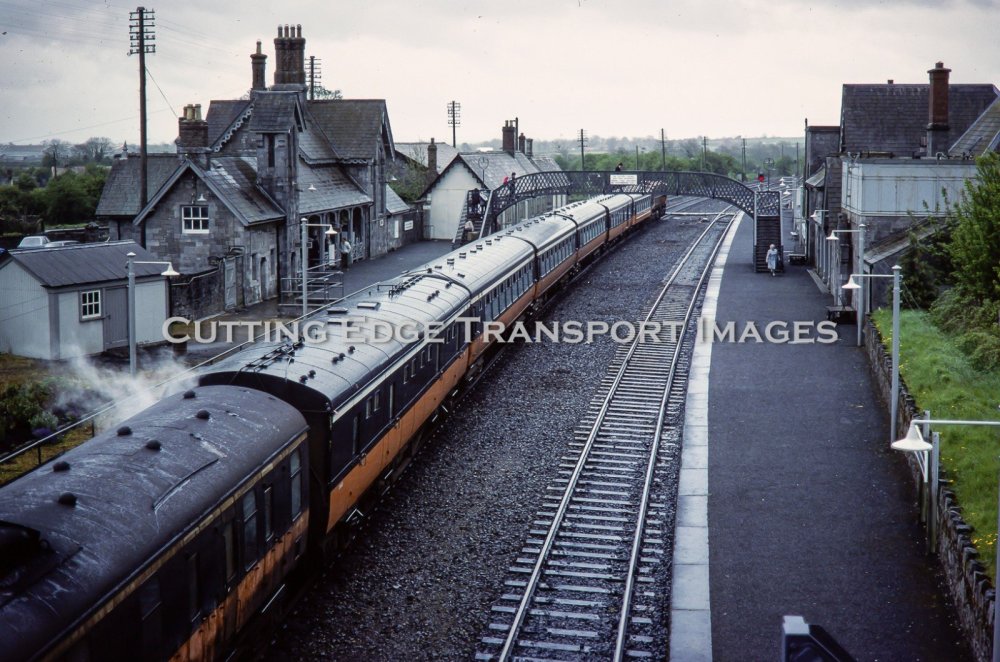
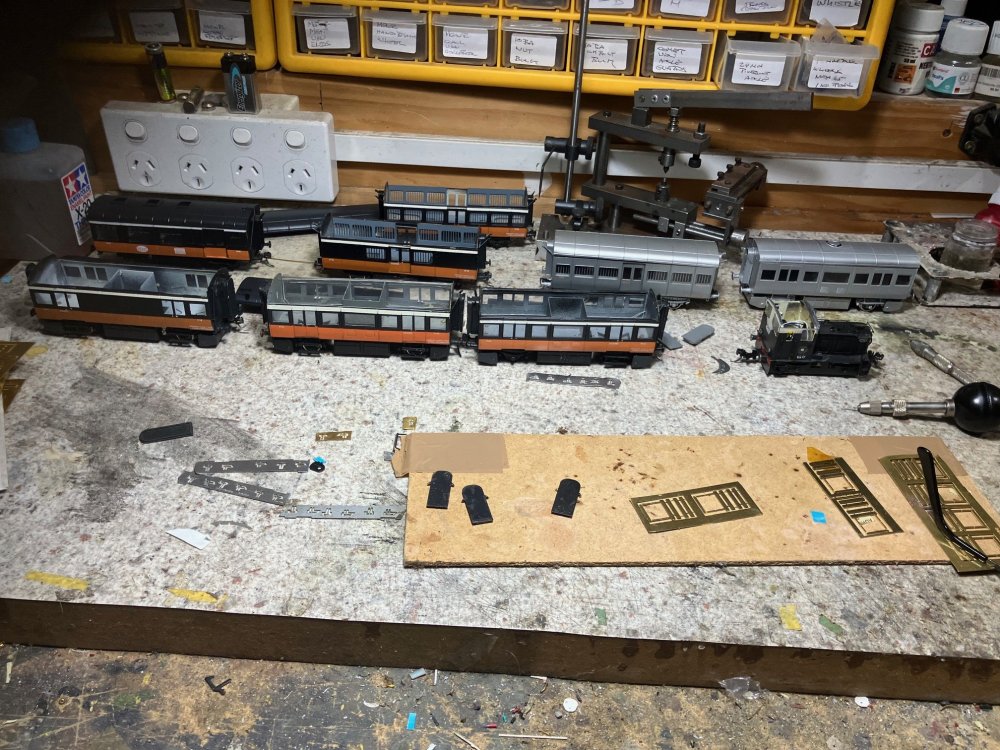
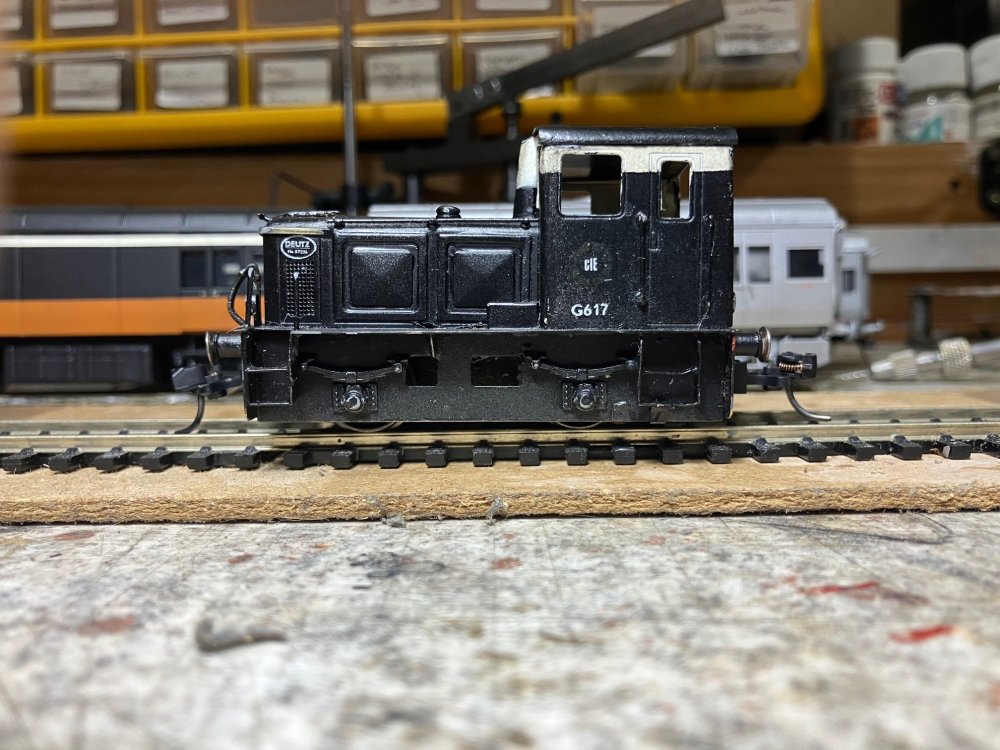
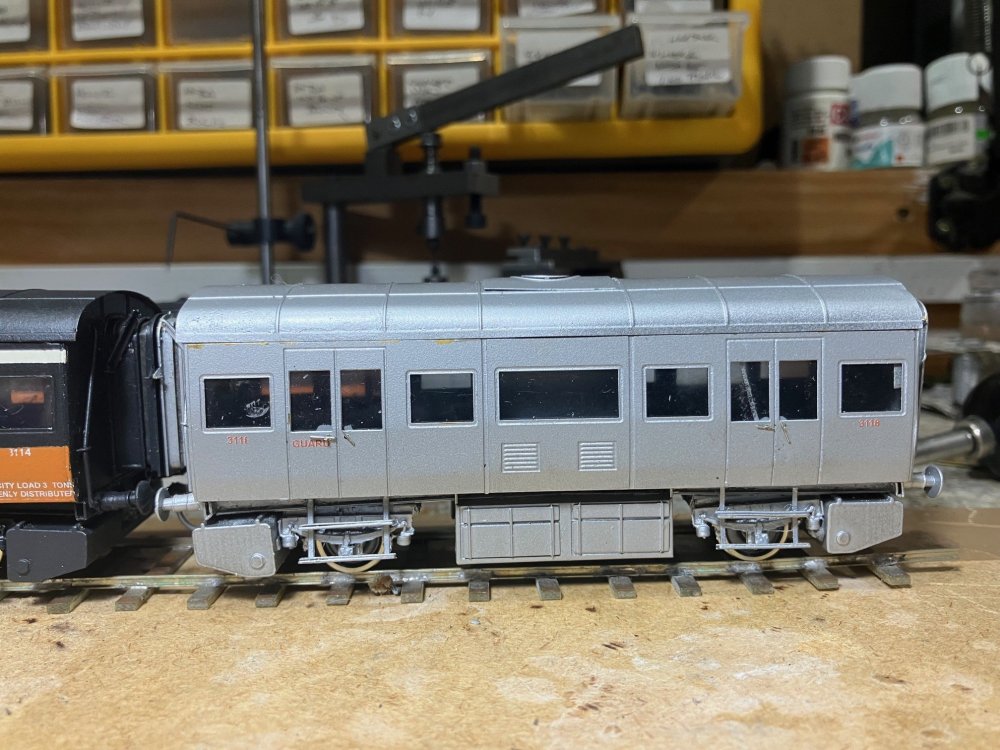
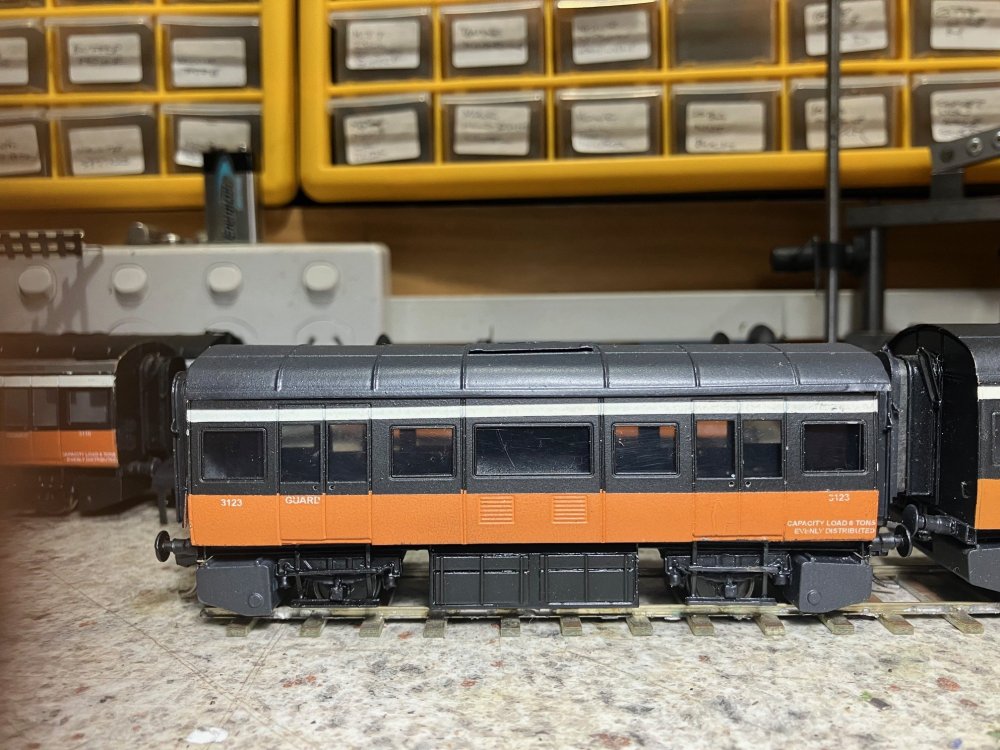
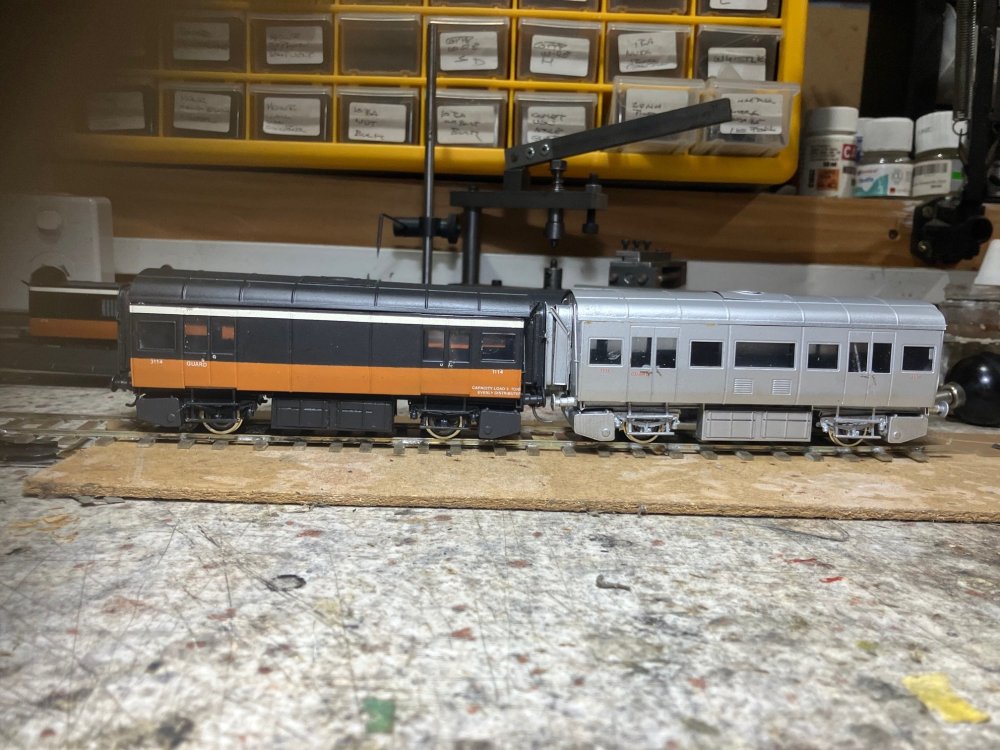
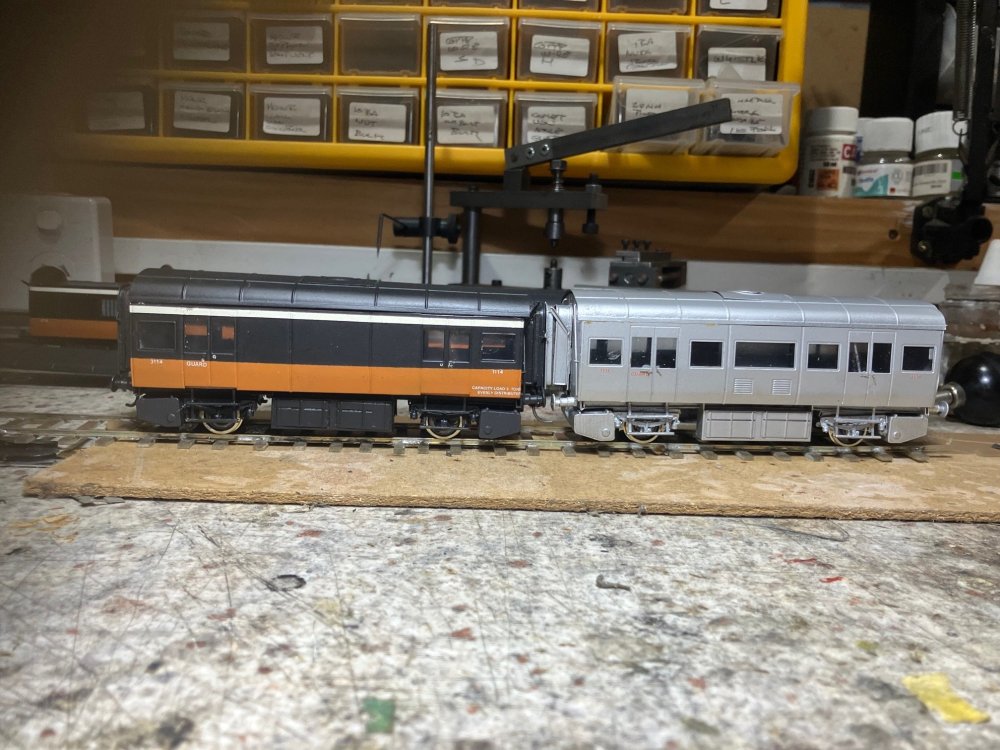
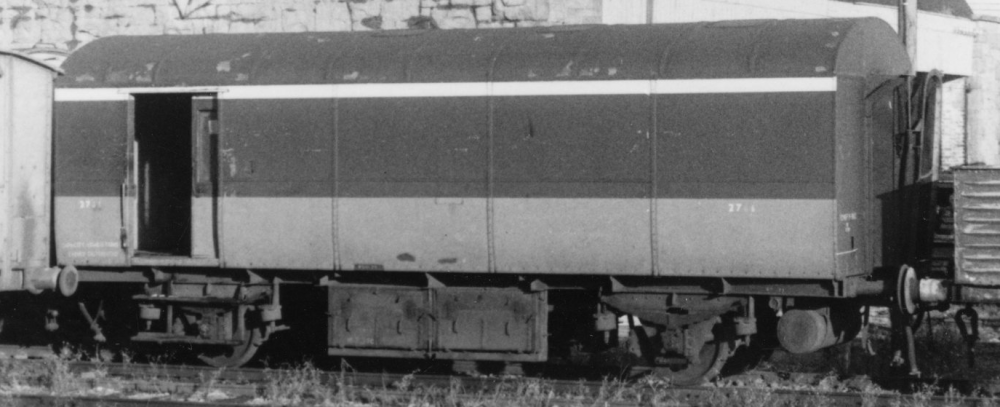
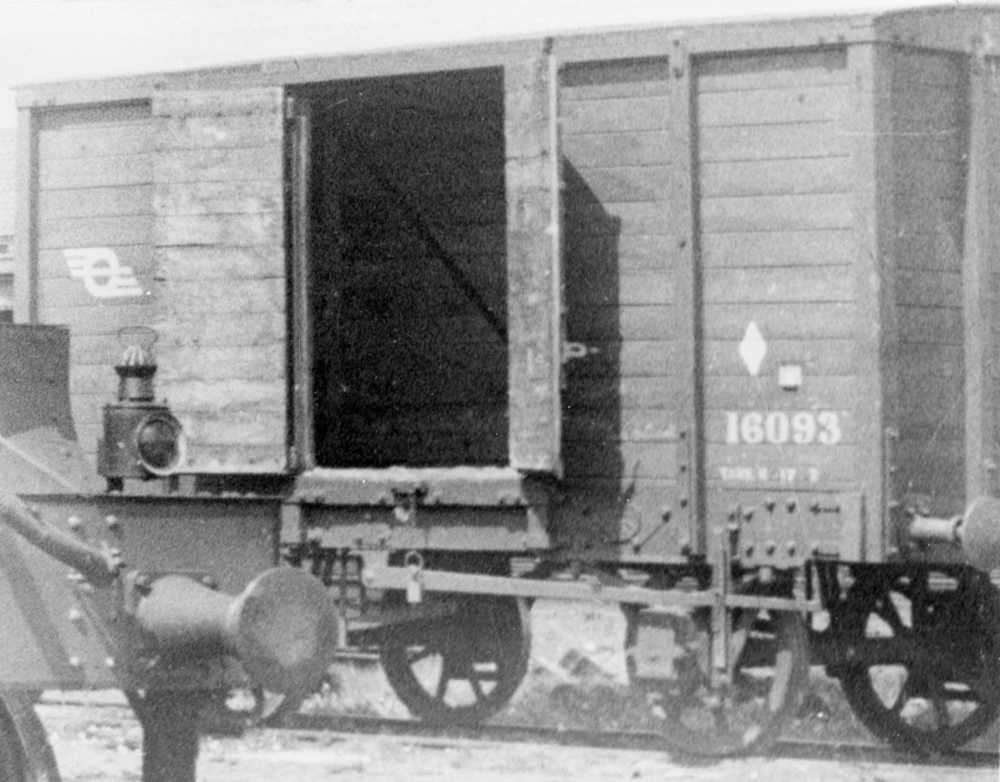
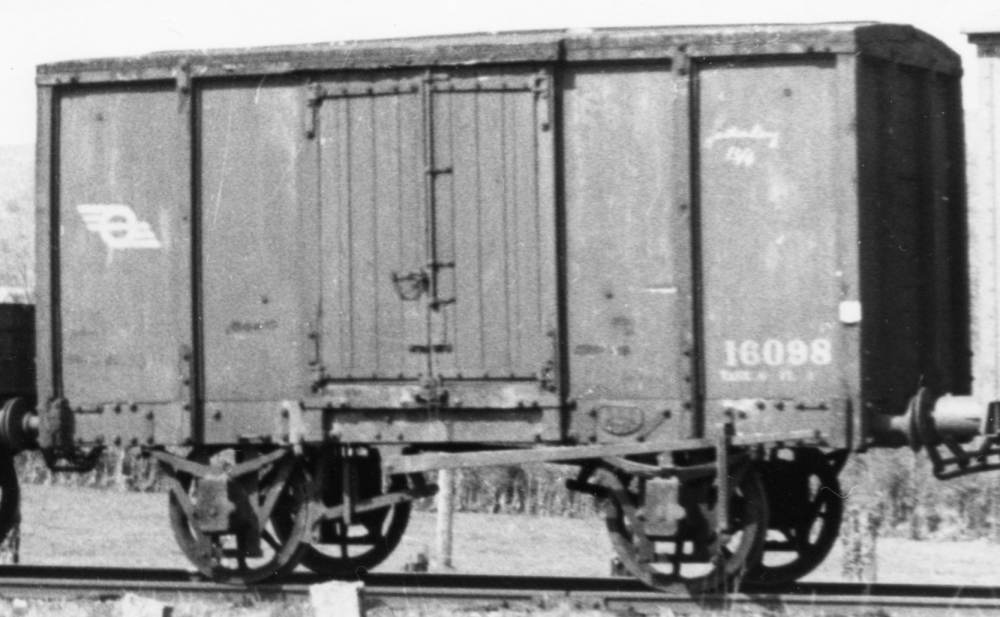
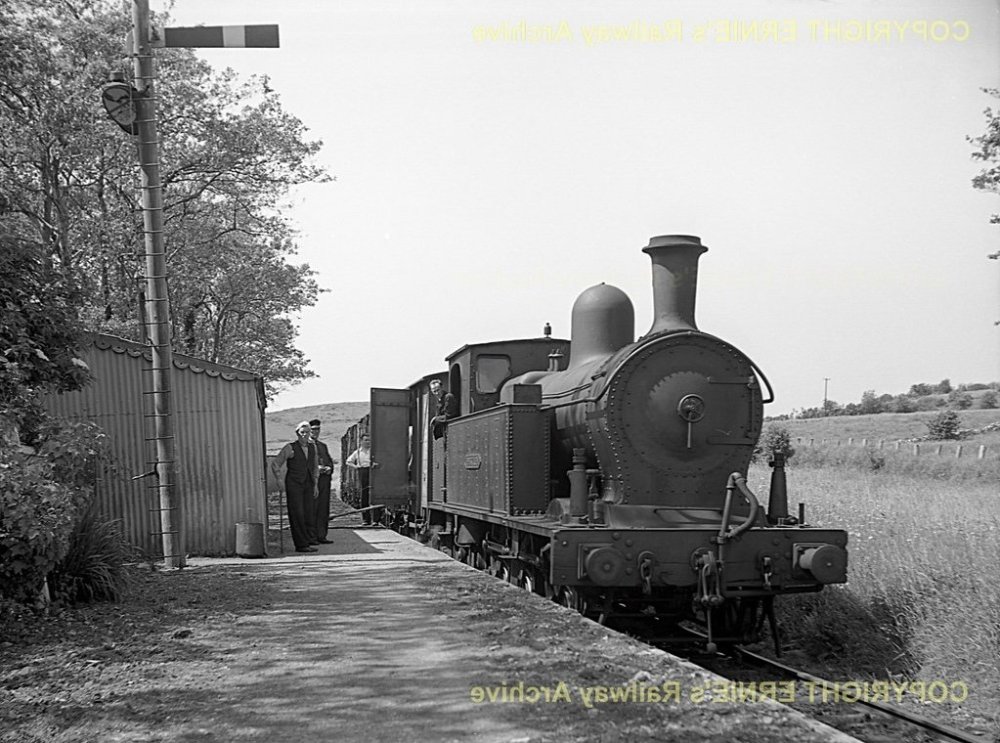

Challenge!
in Irish Models
Posted
Crossley, Metropolitan-Vickers, General Motors, Inchicore Works, Cravens of Sheffield, Dundalk Works….